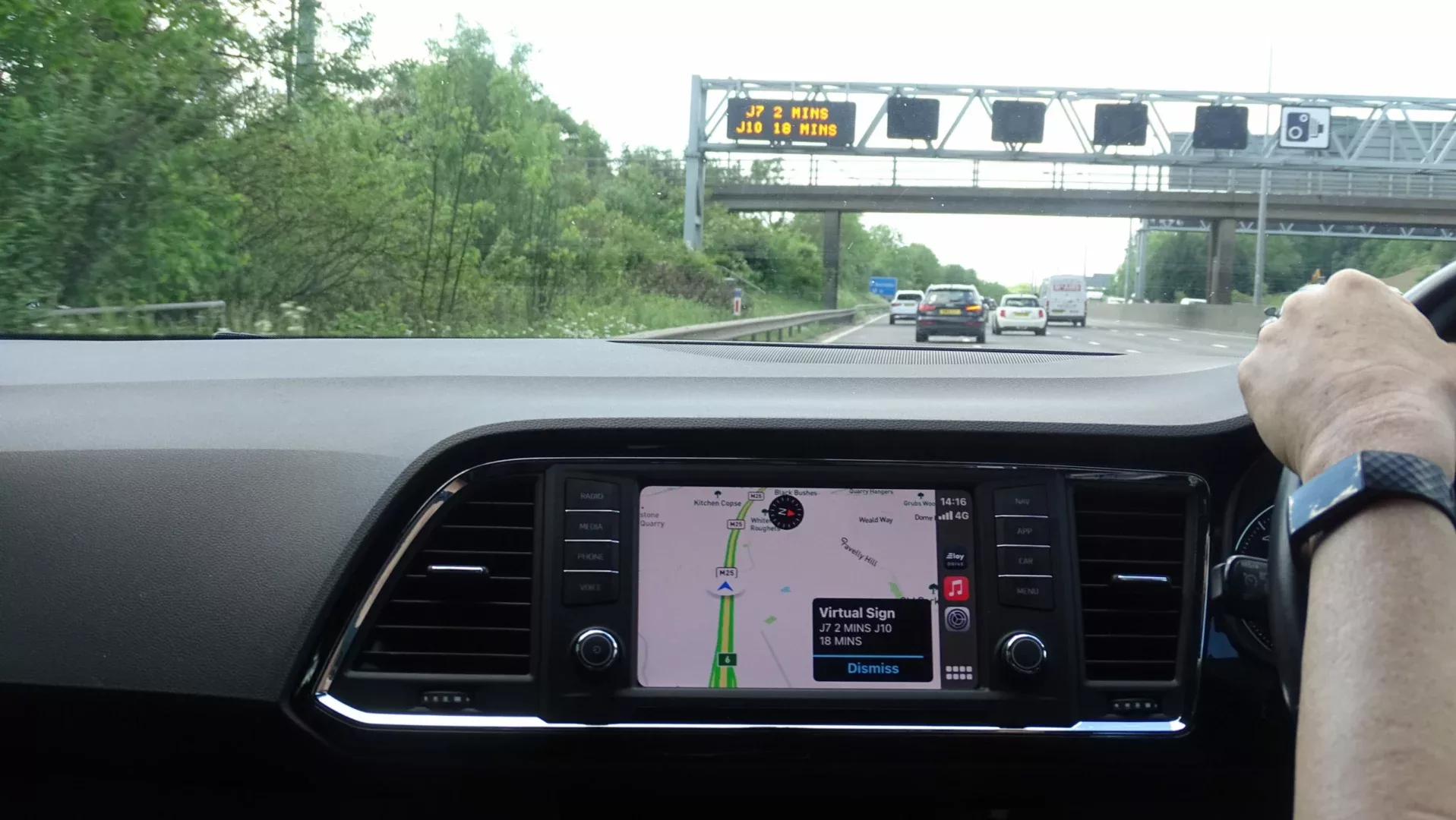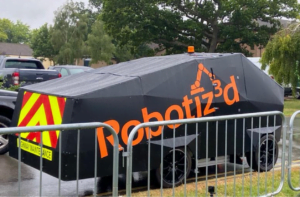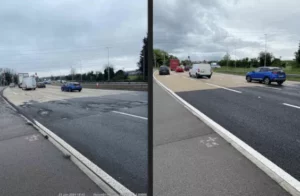A new system that replicates the information shown on electronic road-side signs direct to drivers inside their vehicles is being trialled in the UK after being developed by innovator group Eloy.
The system, which delivers the information onto dashboard screens or mobile devices next to drivers follows a collaboration between Eloy, Andy Graham, from White Willow Consulting, and George Brown from KL Systems. It also allows virtual signs that mirror the format of the roadside displays to be broadcast anywhere.
Signs can be tailored for individual types of vehicles, including lorries, and could even display in the drivers’ chosen language.
Existing Highways England electronic road sign information is already being presented to drivers both in visual and audio form using this new system. This ensures drivers don’t miss important signs as they are able to see them both beside the motorway and in their vehicle.
The signs can be displayed as part of an ordinary navigation service delivered in-vehicle using systems that connect your mobile phone to your car, including CarPlay or Android Auto, via the Eloy app. This gives road authorities a way to communicate with drivers that is closely integrated into standard route guidance.
Because they can also appear on mobile phone apps, potentially the signs can reach older vehicles without a central screen on their dashboard.
Research into how the technology could interact with local authority systems is underway as part of a Department for Transport-sponsored project led by engineering consultancy company Amey Consulting, working with Oxfordshire County Council’s iHub team and Bristol City Council.
Marvin Rees, Mayor of Bristol, said, “Bristol has a long history of productive innovation and this is one of many great examples of how we can use technology and data to develop a smarter, cleaner and safer city. Innovative solutions such as this will help us create a more connected city ensuring Bristol communities benefit from a better transport network, reduced congestion and improved air quality.”
Jackie Davies, Bristol Traffic Control Service added, “Providing information about disruptions on the roads via variable message signs across the city enables road users to make informed decisions about their journey and select routes away from problems, therefore reducing queues.
“Being involved in this innovation which potentially offers a way to provide traffic and travel information directly to bus passengers, cyclists, pedestrians and into vehicles is very exciting for us. The solution will be more flexible, offering a greater ability to communicate with road users at more locations and to more modes of transport, whilst reducing the cost of the messaging solution.”
Damian Horton, Eloy co-founder explained, “The audio solution complements the display on the dashboard or app by helping drivers keep their eyes on the road. We can use Siri and Google Assistant to allow drivers to ask for more information, or to select from options that might update their navigation, switch to a new diverted navigation, or to sit in traffic and wait for it to clear.
“Road signs can also help prevent accidents if they are placed in locations that are deemed to reduce risk on the roads. But it takes time and huge expense to install new signs and we may not be able to place them in the ideal locations due to road layout. It might also be useful to provide variable information, which we already have on many of our motorways, but don’t have on our statistically more dangerous A and B roads.”
George Brown of KL Systems added, “Integration with Eloy’s CarPlay app is a significant step forward for the use of in-vehicle signage. The capability to bring live warnings from road authorities about road network hazards, such as stranded vehicles and queueing traffic, seamlessly into ordinary navigation services delivered into car infotainment systems offers real potential to improve road safety.”
Andy Graham, White Willow Consulting founder commented, “Last month we used KL System’s app in a Model T Ford, to show the capability of putting messages into vehicles of any type and age using connectivity that is here now. I am pleased we are also able to bring messages to newer vehicles and integrate them into sat nav, so that users don’t lose their “default” choice of app.”
You can watch a video showing the system in action here.
(Picture – White Willow Consulting)





















